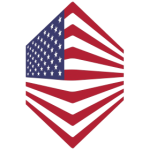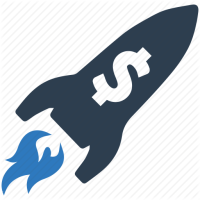ACCT 505 Week 2 Quiz Job Order and Process Costing Systems
ACCT 505 Week 2 Quiz Job Order and Process Costing Systems. Order 100% plagiarism free essay on ACCT 505 Week 2 Quiz Job Order and Process Costing Systems
Question :
(TCO F) For which situation(s) below would an organization be more likely to use a job-order costing system of accumulating product costs rather than a process costing system?
2.
Question :
(TCO F) Process costing would be appropriate for each of the following except:
3.
Question :
(TCO F) Lucas Company uses the weighted-average method in its process costing system. The company adds materials at the beginning of the process in the Forming Department, which is the first of two stages in its production process. Information concerning operations in the Forming Department in October follows:
Units
Material Cost
Work in process on October 1
6,000
$3,000
Units started in October
50,000
$25,560
Units completed and transferred to next Department during October
44,000
ACCT 505 Week 2 Quiz Job Order and Process Costing Systems. Order 100% plagiarism free essay on ACCT 505 Week 2 Quiz Job Order and Process Costing Systems
What was the materials cost of work in process at on October 31?
4.
Question :
(TCO F) In a job-order costing system, the use of direct materials that have been previously purchased is recorded as a debit to:
5.
Question :
(TCO F) During December at Ingrim Corporation, $74,000 of raw materials were requisitioned from the storeroom for use in production. These raw materials included both direct and indirect materials. The indirect materials totaled $6,000. The journal entry to record the requisition from the storeroom would include a:
6.
Question :
(TCO F) Valles Corporation had $22,000 of raw materials on hand on February 1. During the month, the company purchased an additional $75,000 of raw materials. The journal entry to record the purchase of raw materials would include a:
1.
Question :
(TCO F) Whether a company uses process costing or job-order costing depends on its industry. A number of companies in different industries are listed below:
i. Brick manufacturer
ii. Contract printer that produces posters, books, and pamphlets to order
iii. Natural gas production company
iv. Dairy farm
v. Coal mining company
vi. Specialty coffee roaster (roasts small batches of specialty coffee beans)
For each company, indicate whether the company is most likely to use job-order costing or process costing.
i. Brick manufacturer Process Costing ii. Contract printer that produces posters, books, and pamphlets to order Job Order Costing iii. Natural gas production company Process Costing iv. Dairy farm Process Costing v. Coal mining company Process Costing vi. Specialty coffee roaster (roasts small batches of specialty coffee beans) Job Order Costing
2.
Question :
(TCO F) Job 484 was recently completed. The following data have been recorded on its job cost sheet:
Direct materials
$57,240
Direct labor hours
1,692 DLHs
Direct labor wage rate
$12 per DLHS
Number of units completed
3,600 units
The company applies manufacturing overhead on the basis of direct labor-hours. The predetermined overhead rate is $24 per direct labor-hour.
Compute the unit product cost that would appear on the job cost sheet for this job.
ACCT 505 Week 2 Quiz Job Order and Process Costing Systems. Order 100% plagiarism free essay on ACCT 505 Week 2 Quiz Job Order and Process Costing Systems
Question :
(TCO F) Miller Company manufactures a product for which materials are added at the beginning of the manufacturing process. A review of the company’s inventory and cost records for the most recently completed year revealed the following information:
Units
Materials
Conversion
Work in process. Jan. 1 (80% complete with respect to conversion costs)
100,000
$100,000
$157,500
Units started into production
500,000
Costs added during the year:
Materials
$650,000
Conversion
$997,500
Units completed during the year
450,000
The company uses the weighted-average cost method in its process costing system. The ending inventory is 50% complete with respect to conversion costs.
Required:
i. Compute the equivalent units of production and the cost per equivalent units for materials and for conversion costs.
ii. Determine the cost transferred to finished goods.
iii. Determine the amount of cost that should be assigned to the ending work in process inventory.
4.
Question :
(TCO F) Weisinger Corporation has provided the following data for the month of January:
Inventories
Beginning
Ending
Raw materials
$28,000
$29,000
Work In process
$16,000
$14,000
Finished goods
$42,000
$54,000
Additional Information
Raw material purchases
$56,000
Direct labor costs
$87,000
Manufacturing overhead cost incurred
$51,000
Indirect materials included in manufacturing overhead costs incurred
$3,000
Manufacturing overhead cost applied to work in process
$55,000
Prepare a Schedule of Cost of Goods Manufactured and a Schedule of Cost of Goods Sold in good form.






